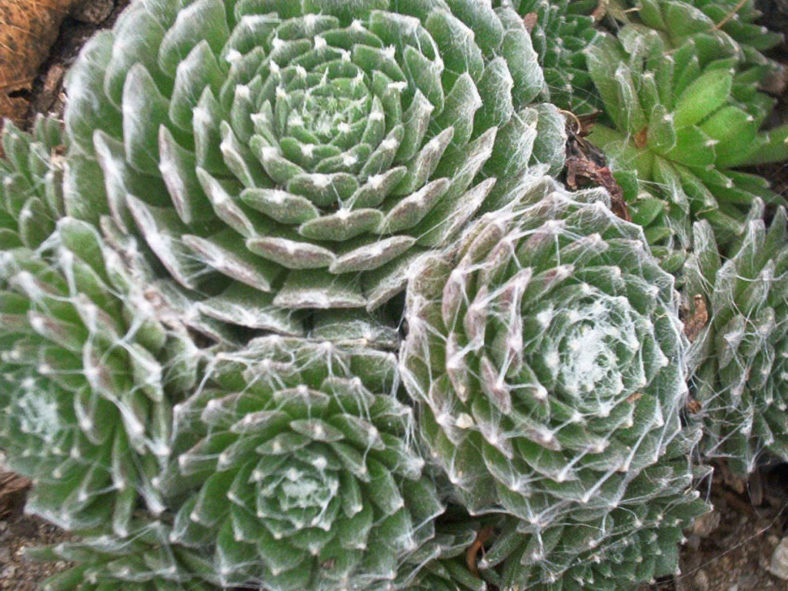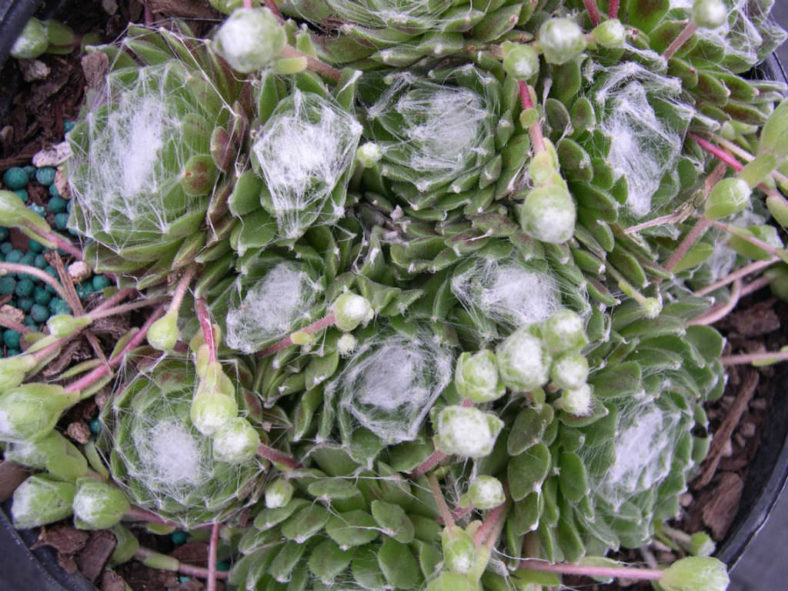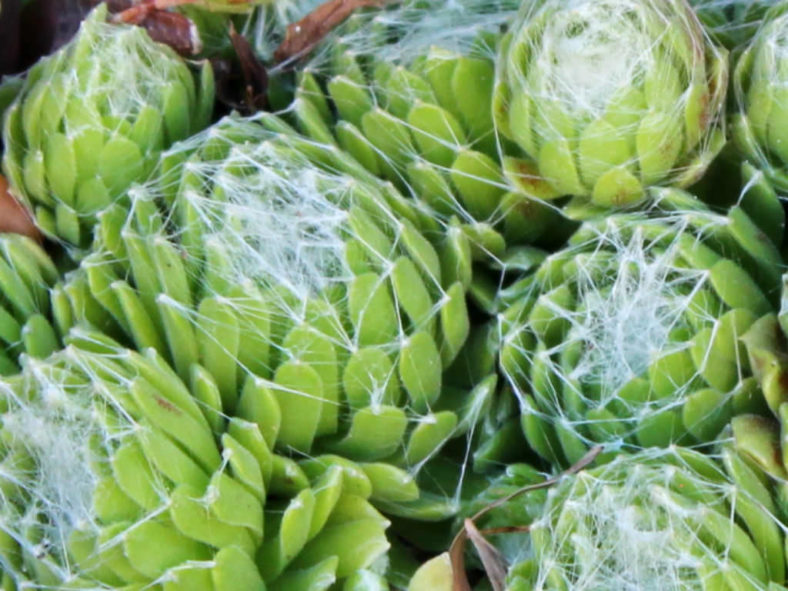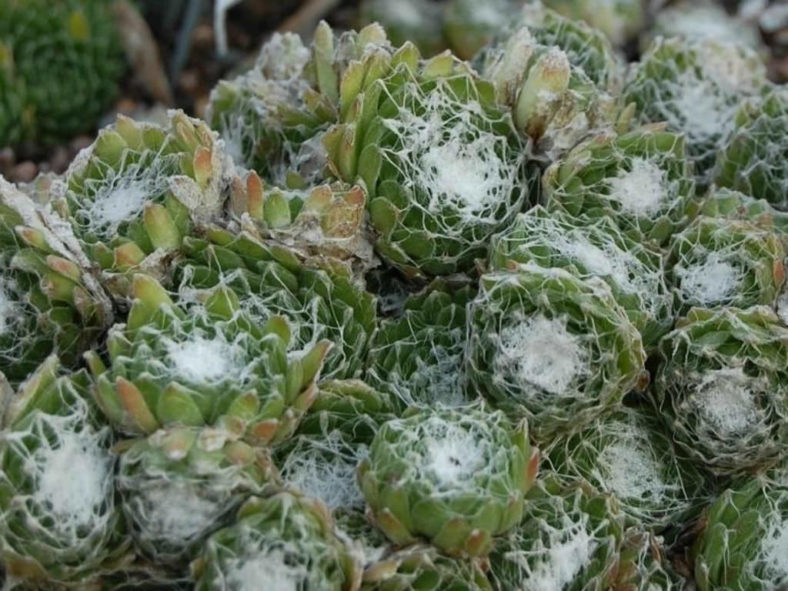Scientific Name
Sempervivum arachnoideum 'Cebenese'
Common Name(s)
Cobweb Houseleek, Spider Web Hens and Chicks
Scientific Classification
Family: Crassulaceae
Subfamily: Sedoideae
Tribe: Sedeae
Subtribe: Sedinae
Genus: Sempervivum
Origin
Sempervivum arachnoideum 'Cebenese' is a cultivar of Sempervivum arachnoideum with larger rosetets.
Description
Sempervivum arachnoideum 'Cebenese' is a small succulent that forms delicate rosettes of pale green leaves covered with heavy white webbing. The rosettes can grow up to 3 inches (7.5 cm) in diameter and produce many offsets on short stolons. The leaves often have a pink tinge on the edges.
The pink, star-shaped, 8—to 10-merous flowers appear on leafy stalks that can grow up to 5 inches (12.5 cm) tall in summer. The mother rosette "hen" dies after flowering but produces many offsets "chicks" before it dies.

Hardiness
USDA hardiness zone 4a to 10b: from -30°F (-34.4°C) to 40°F (4.4°C).
How to Grow and Care
Because of their variability, Cobweb Houseleek easily adapts to local conditions. Due to the small gene pool, it becomes a form or variety quite quickly, perfectly adapted to the local conditions of heat and cold, the amount of snow or rain, and at what times of the year.
Relatively easy to grow in a container or a rock garden, scree bed, wall crevice, trough, or alpine house. They are ideal in so many ways, as they quickly start to form very tight clusters of rosettes, filling in Sempervivum walls, mosaics, and topiary, and their shallow yet fibrous root systems hold soil in place even in vertical plantings. After the plant blooms and sets seed, it will die, but there will be many offsets to take its place.
Plant in well-drained succulent potting mix in full sun to light shade. Water regularly during the growing season and allow the soil to dry out before watering again. Water very little during the winter months.
See more at How to Grow and Care for Sempervivum.
Links
- Back to genus Sempervivum
- Succupedia: Browse succulents by Scientific Name, Common Name, Genus, Family, USDA Hardiness Zone, Origin, or cacti by Genus
Photo Gallery
Click on a photo to see a larger version.


